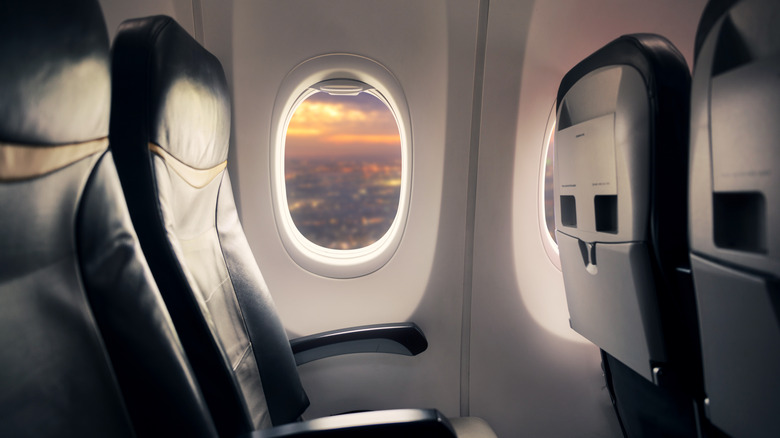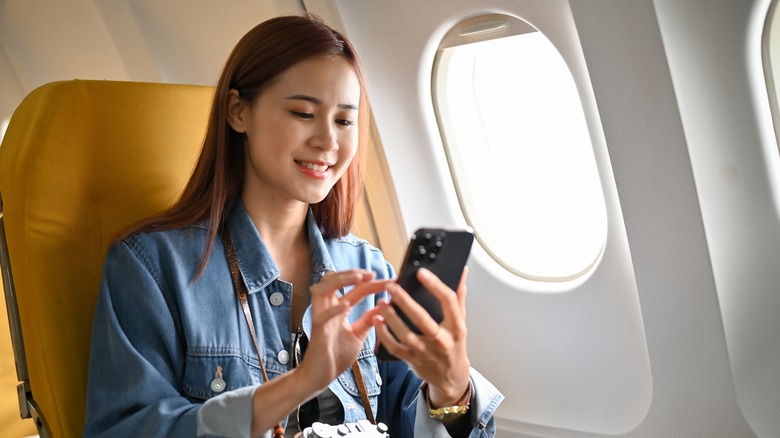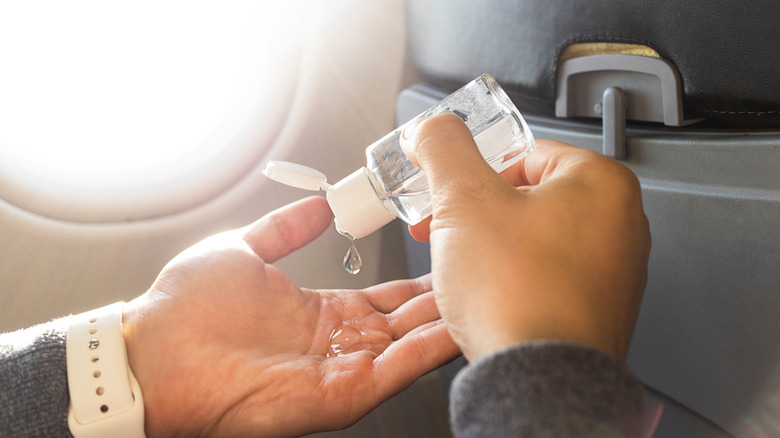This Is The Best Airline Seat For Germaphobes
For germaphobes, an airplane can seem like the perfect breeding ground for sickness. Unless you're in first class, you're going to be in pretty close quarters with a bunch of coughing and spluttering strangers for a few hours. Short of boarding a plane in a hazmat suit, what can you do to keep colds and flu at bay?
According to a recent study published in Proceedings of the National Academy of Sciences, movement around the plane is what spreads germs the most. Their conclusion is that sitting in a window seat and not getting up too much gives you the best chance of avoiding infection.
In contrast, an aisle seat gives you the highest chance of catching something onboard, as does going to the bathroom several times. However, if you do get stuck in an aisle seat right by the toilets, don't panic! Scientists have found that the likelihood of getting sick on a plane is generally low. According to Business Insider, if one passenger on a plane of 150 people is sick, only one other passenger is likely to become infected. That being said, why not lower the risk?
Why choose a window seat?
As we said, scientists have concluded that a window seat is the best airline seat for germaphobes. And if you truly want to stay safe, you should get up as little as possible during the flight.
Movement around the plane was found to account for the transmission of infectious diseases more than an airplane's recirculated air. Business Insider writes that scientists doing the study observed that people sitting in a window seat tend to leave their seats less than those in the middle or aisle seats. This makes sense. Window seat occupants tend to get everything they need from the overhead bins before they sit down and often try to get up as little as possible so as not to disturb their fellow passengers. They also don't have to get up to allow passengers in their row to get out to go to the bathroom (or have the germaphobe's nightmare of people clambering over them while they're asleep). People in aisle seats also have other passengers and the airline crew walking past them often, so they have contact with a larger number of plane passengers.
Other ways to protect yourself on an airplane
If you don't manage to book early and secure yourself a window seat, there are other ways to cut your chances of catching a respiratory disease onboard an aircraft. CNET recommends washing your hands thoroughly with soap and water and using hand sanitizer before you eat anything. Try not to touch your face too much and, if you do want to, give yourself a big dollop of hand sanitizer again. Carry antiseptic wipes and clean high-touch areas as soon as you sit down. That means your tray table, armrests, seat belt, and anywhere else you're likely to touch often around your seat.
According to researcher Vicki Hertzberg who spoke to NPR, if you are sick with a respiratory illness, wearing a mask and opening air vents above your seat can help protect other passengers. You could also consider staying home and waiting until you're healthy again before you travel. The real best seat on an aircraft? Far away from anyone who's coughing or sneezing.


